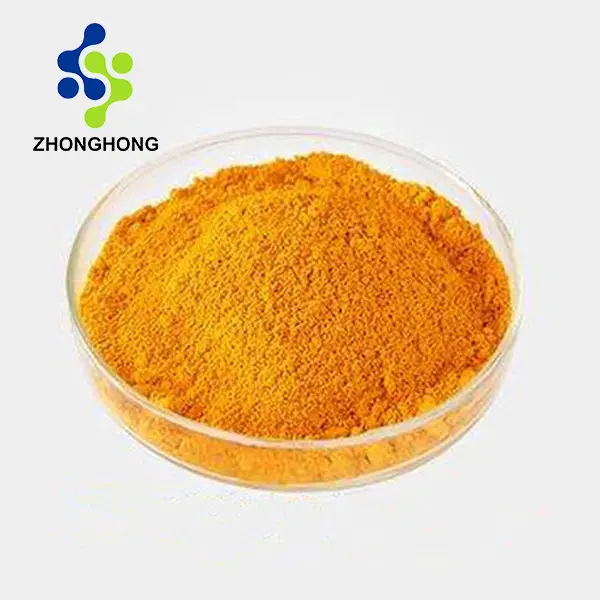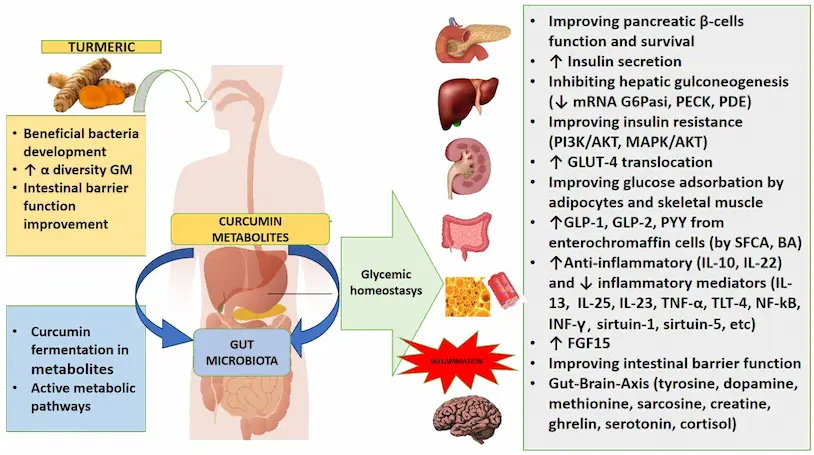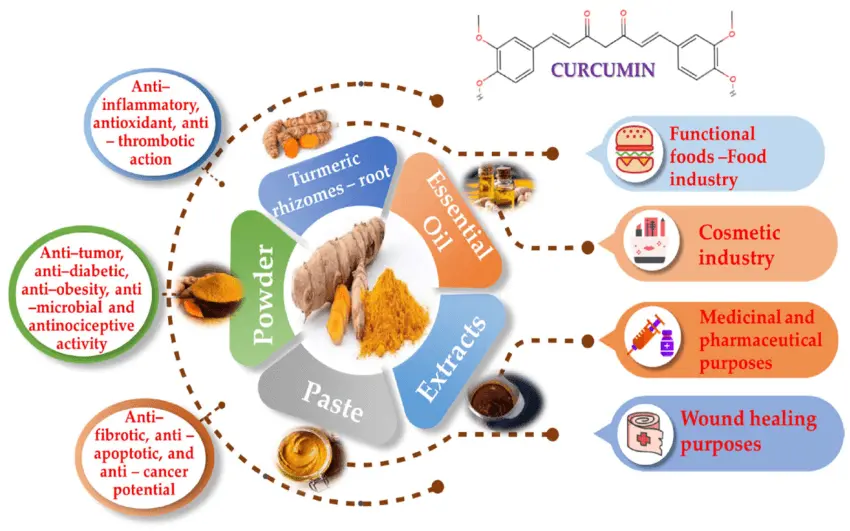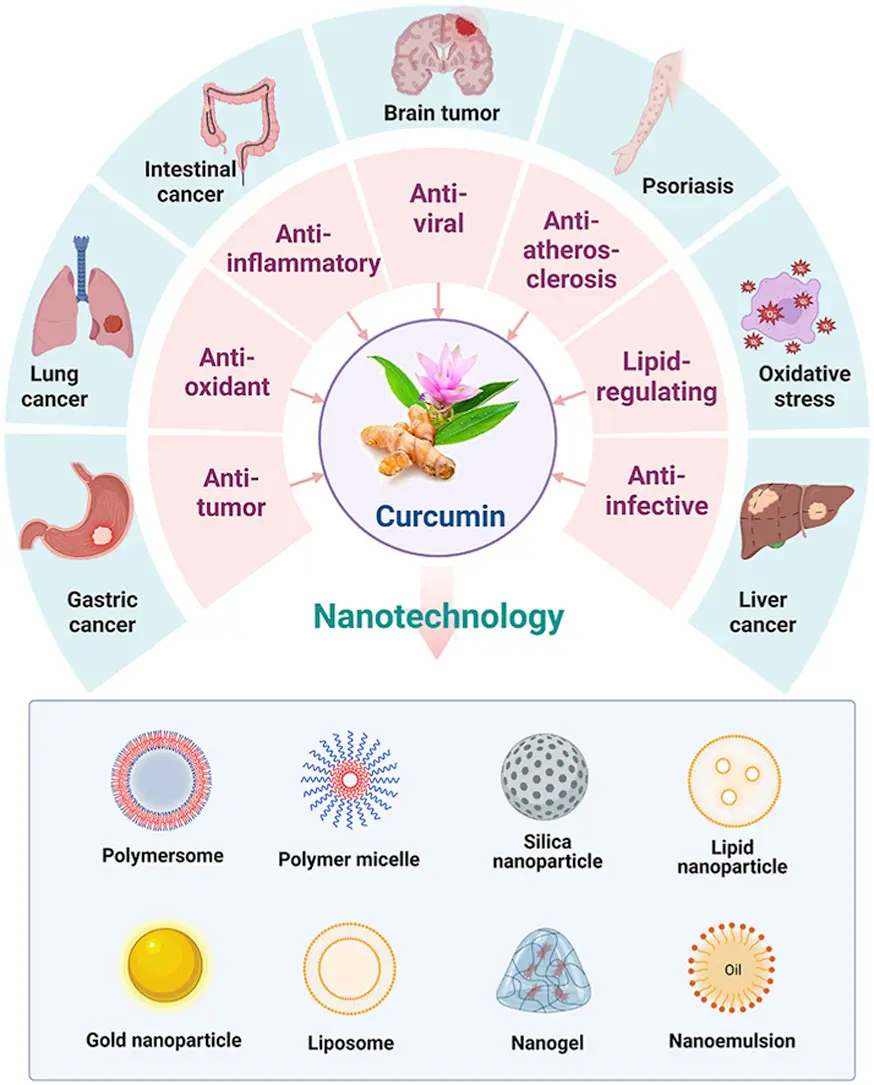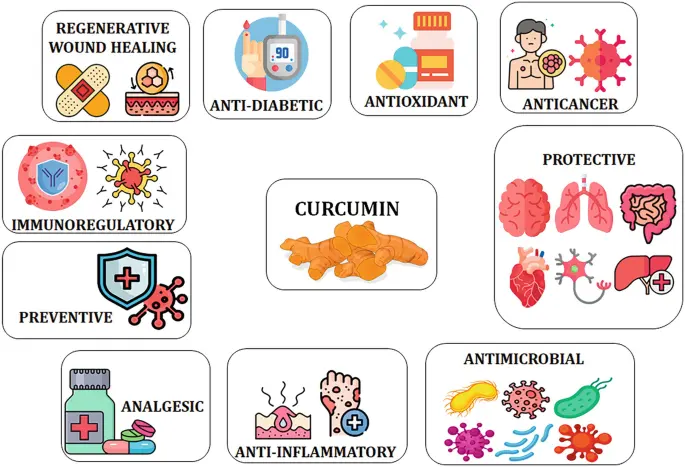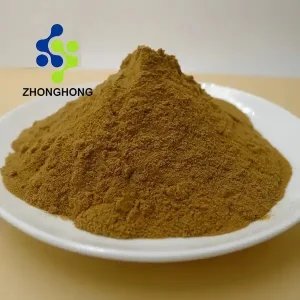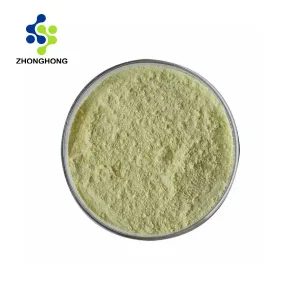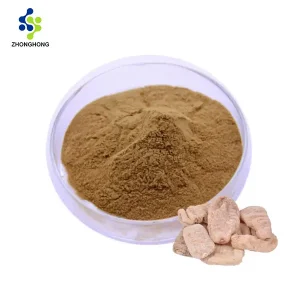Závěrečné informace o prémiovém extraktu z kurkuminu: Nabídka, výhody a informace o nakupování
1. Co je kurkumin?
Kurkumin je známá sloučenina nalezená v oddencích kurkumy (Kurkuma dlouhá (Curcuma longa L.)). Právě to dává kurkumě její zářivě zlatožlutou barvu a je zodpovědné za většinu jejích slavných zdraví prospěšných vlastností. Zatímco kurkuma obsahuje pouze přibližně 2,51 TP3T kurkuminu hmotnostně, vysoce kvalitní extrakty tuto vysoce účinnou bioaktivní látku koncentrují, což z ní činí jednu z nejdůležitějších zkoumaných přírodních látek na světě pro podporu zdraví.
2. Dodávky, chemie a specifikace

-
Zásobování: Získává se ze sušených oddenků Kurkuma dlouhá (Curcuma longa L.) rostlina.
-
Klíčová bioaktivní látka: Kurkumin (někdy standardizovaný na celé kurkuminoidy 95%).
-
Chemický profil:
-
Číslo CAS: 458-37-7 (pro kurkumin)
-
MF: C₂₁H₂₀O₆
-
MW: 368,38 g/mol
-
EINECS: 207-280-5
-
-
Vzhled: Nádherný, zářivě žlutý až oranžovožlutý prášek.
-
Rozpustnost: Rozpustný v ethanolu, DMSO a olejích; nerozpustný ve vodě.
3. Výběr NEJLEPŠÍHO extraktu z kurkuminu: Zhonghong Customary
Výběr kvalitního extraktu z kurkuminu je pro účinnost klíčový. Zde je to, co definuje špičkový produkt:
-
Klíčové prvky a účinnost: Hledat extrakty standardizované podle 95% Kurkuminoidy (aktivní sloučeniny: kurkumin, demethoxykurkumin a bisdemethoxykurkumin). Toto přehnané zaměření zajišťuje největší zisk.
-
Potvrzené zdravotní přínosy (souladná tvrzení):
-
Vysoce účinné antioxidační cvičení: Pomáhá chránit buňky před poškozením způsobeným volnými radikály.
-
Pomáhá uklidnit a zlepšit pohyblivost kloubů: Podporuje zdravou zánětlivou reakci a napomáhá pohodlnému pohybu.
-
Podporuje kognitivní výkon: Pomáhá duševní pohodě a paměti.
-
Podporuje trávicí pohodu: Napomáhá zdravému fungování trávicího systému a jater.
-
(Poznámka: Tato tvrzení nebyla hodnocena Úřadem pro kontrolu potravin a léčiv (FDA). Tento produkt nemá diagnostikovat, léčit, léčit ani zastavovat žádnou nemoc.)
-
-
Optimální denní dávka: Typické doplňkové dávky se liší od 250 mg až 500 mg extraktu z kurkuminu 95%, užívaného 1–3krát denně. Vždy vyhledejte radu zdravotnického pracovníka, který vám poskytne individuální doporučení.
-
Problémy s původem: Získává se z prvotřídních oddenků kurkumy pěstovaných v optimálních oblastech.
-
Využití: Ideální pro kapsle, tablety, užitečná jídla, nápoje a kosmetické přípravky. Vzhledem ke špatné rozpustnosti ve vodě se obvykle mísí s látkami zvyšujícími vstřebávání (např. piperin z černého pepře) nebo se formuluje jako fosfolipidové komplexy.
-
Kdo může profitovat: Dospělí hledající čistou pomoc při zánětu, antioxidační ochraně, zdraví kloubů a celkové vitalitě.
-
Základní otázky a vedlejší účinky:
-
Ředidla krve: Kurkumin by mohl mít jemné vlastnosti na ředění krve. Požádejte o radu svého lékaře pokud užíváte antikoagulační léky (např. warfarin).
-
Žlučové kameny/obstrukce žlučovodů: Může stimulovat tvorbu žluči. Pokud máte tyto stavy, vyhýbejte se mu.
-
Těhotenství/kojení: Bezpečnost není zcela stanovena. Uchovávejte mimo dosah lékaře nebo používejte pouze pod jeho dohledem.
-
Typicky chráněno: Nadměrné dávky mohou u některých lidí vyvolat mírné zažívací potíže.
-
4. Zhonghong Biotech: Váš důvěryhodný společník s kurkuminem
Hledáte spolehlivého dodavatele, výrobce nebo výrobní závod na kurkumin pro velkoobchodní prodej? Shaanxi Zhonghong Investment Technology Co., Ltd. je vaším světovým společníkem založeným na vědeckých poznatcích. S 28 lety zkušeností přepracováváme tepelně neupravené botanické výtažky na silné a spolehlivé látky.
-
Základní zkušenost: Jsme specialisté na špičkové metody extrakce a čištění rostlinných aktivních látek. Naše produktová řada obsahuje:
-
Standardizované botanické extrakty
-
Nutraceutické a farmaceutické prvky
-
Aktivní kosmetické přípravky
-
Součásti jídel a nápojů
-
Přírodní barviva a sladidla
-
-
Nezlomná vědecká výhoda:
-
Inovační centrum: Spolupráce na výzkumu a vývoji s 5 hlavními univerzitami a více než 20 patenty.
-
Vysoká kvalita Bezkonkurenční: Náš HPLC a NMR spektroskopie Zařízení zajišťuje rozsah čistoty, který překračuje obchodní požadavky dle normy 20%, a zaručuje, že každá šarže splňuje přesné specifikace.
-
Přizpůsobení světa: Nabízíme na míru šité ingredience zákazníkům ve více než 80 zemích, od předních farmaceutických společností až po progresivní výrobce doplňků stravy.
-
5. Hluboký ponor: Výhody kurkuminu a mechanismus jeho pohybu
Výhody kurkuminu jsou spojeny s jeho složitou souhrou s mnoha molekulárními drahami.
-
Mechanismus pohybu:
-
Protizánětlivé: Moduluje klíčové transkripční elementy (jako NF-κB) a cytokiny zapojené do zánětlivé reakce.
-
Antioxidant: Okamžitě neutralizuje volné radikály a zvyšuje aktivitu vlastních antioxidačních enzymů těla (jako je glutathionperoxidáza).
-
Buněčná signalizace: Ovlivňuje činnost enzymů a proteinů, které regulují přežití buněk, proliferaci a apoptózu.
-
-
Hranice a výzvy analýzy: Současná studie zkoumá jeho roli v metabolickém zdraví, podpoře nálady a zdraví pokožky. Prvním problémem bylo jeho... nízká biologická dostupnost; problém, který řešíme pomocí lepšího řízení formulace a použití kodeků se zvýšenou absorpcí.
6. Přísné řízení vysoké kvality: Náš slib
Vysoká kvalita je zakořeněna v naší DNA. Naše nejmodernější zařízení a přísné protokoly zaručují, že každý gram našeho kurkuminu je chráněný, čistý a účinný.
-
ID: Potvrzeno pomocí HPLC a TLC v souladu s referenčními požadavky.
-
Test: Přesná kvantifikace celých kurkuminoidů (a v případě potřeby i kurkuminoidů konkrétní osoby) s využitím HPLC-UV.
-
Čistota a bezpečnost: Zavádíme přísnou nulovou toleranci vůči kontaminantům. Naše kompletní certifikát pravosti obsahuje:
Abstrakt certifikátů o hodnocení (COA) – konzultační dávka
| Třída | Parametr | Specifikace | Metodika kontroly |
|---|---|---|---|
| Pesticidy | Chlorpyrifos | ≤ 0,2 mg/kg | GC-MS/MS |
| Cypermethrin | ≤ 0,5 mg/kg | GC-MS/MS | |
| Dichlorvos | ≤ 0,1 mg/kg | GC-MS/MS | |
| …(Celý apartmán) | (Podle USP/EP) | GC-MS/MS / LC-MS/MS | |
| Těžké kovy | Olovo (Pb) | ≤ 3,0 mg/kg | ICP-MS |
| Arsen (As) | ≤ 2,0 mg/kg | ICP-MS | |
| Kadmium (Cd) | ≤ 1,0 mg/kg | ICP-MS | |
| Rtuť (Hg) | ≤ 0,1 mg/kg | ICP-MS | |
| Mikrobiologie | Závisí na celém talíři | ≤ 10 000 KTJ/g | USP <61> |
| Kvasinky a plísně | ≤ 100 KTJ/g | USP <61> | |
| E. coli | Škodlivé v 1g | USP <62> | |
| Salmonela druhů | Škodlivé v 10 g | USP <62> | |
| Společný | Kurkuminoidy | ≥ 95,0% | HPLC-UV |
| Úbytek hmotnosti sušením | ≤ 5,01 TP3T | USP <731> | |
| Zbytková rozpouštědla | Splňuje ICH Q3C | GC-FID |
(Ke každé šarži je dodáván kompletní certifikát pravosti.)
7. Vynikající výrobní kurz
Naše metodologie maximalizuje výtěžnost a zachovává bioaktivitu:
-
Zdroje a příprava: Výběr a čištění prémiových oddenků kurkumy.
-
Extrakce: Využití ekologických rozpouštědel (např. ethanolu) k extrakci kurkuminoidů z rostlinných materiálů.
-
Filtrace a zaostření: Odstranění použitých rostlinných látek a zahuštění tekutého extraktu.
-
Čištění: Dodatečná rafinace extraktu pro dosažení specifikovaného stupně čistoty 95%+.
-
Krystalizace a standardizace: Přesná standardizace pro zajištění stálého obsahu kurkuminoidů.
-
Sušení: Přeměna čistého extraktu na stabilní, vysoce kvalitní prášek pomocí kontrolovaných metod sušení.
-
Kontrola kvality a balení: Konečný produkt prochází přísnými testy ještě před zabalením k přepravě.
8. Všestranné aplikační scénáře
Náš kurkuminový extrakt je určen pro různé druhy zboží:
-
Doplňky stravy: Kapsle, tablety a měkké kapsle pro klouby, antioxidanty a celkovou pohodu.
-
Praktická jídla a nápoje: Zlaté mléko, fotky pro zdraví, čaje a svačiny s vitamíny.
-
Kosmeceutika: Omlazující pleťové vody, séra a masky pro své rozjasňující a antioxidační vlastnosti.
-
Přírodní barvivo: Nabízí stálou, zářivou žlutou barvu jídlům, kosmetice a textiliím.
9. Balení a světová logistika
-
Obal: Obvyklý 25kg/vláknitý sud s dvojitou vrstvou polyethylenové vložky pro potravinářské účely. K dispozici je zakázkové balení (1 kg, 5 kg) velkoobchod a vzorové objednávky.
-
Skladování: Prodejce skladujte na chladném, suchém a tmavém místě pro zachování účinnosti.
-
Trvanlivost: 24 měsíců při správném skladování v uzavřených nádobách.
-
Logistika: Odborně se staráme o celosvětovou přepravu a veškerou nezbytnou dokumentaci (COA, MSDS, certifikáty původu) pro snadný dovoz do více než 80 zemí.
10. Získejte svůj prémiový extrakt z kurkuminu
Dokážete formulovat s dokonalým? Společník s Zhonghongem na vašem hromadné Kurkumin chce.
-
Agresivní ceny: Získejte perfektní hodnota pro vysoce kvalitní kurkumin přímo z výrobce.
-
Přizpůsobení: Poskytujeme přírodní extrakt vyrobený na míru možnosti šité na míru vašim konkrétním požadavkům na formulaci (např. zcela odlišné standardizace, směsi pro lepší biologickou dostupnost).
-
BEZPLATNÝ VZOREK: Ověřte si naši vysokou kvalitu s přírodní extrakt zdarmaPodívejte se sami na rozdíl od Zhonghongu.
Kontaktujte nás hned teď pro cenovou nabídku nebo vzor!
-
Internet: www.aiherba.com
-
E-mail: sales@aiherba.com; liaodaohai@gmail.com
-
Klíčové fráze: Dodavatel kurkuminu, velkoobchodní prodej kurkuminu, nákup kurkuminu, výrobní závod na kurkumin, velkoobchod s kurkuminem, hodnota kurkuminu, výrobce kurkuminu dodavatel organických rostlinných extraktů, přírodní extrakt vyrobený na míru, přírodní extrakt zdarma.
11. Neustále kladené otázky (FAQ)
-
Otázka: Jaká je vaše minimální objednávková částka (MOQ)?
A: Pro hromadné objednávky je naše minimální objednávkové množství obvykle XX kg. Pro analýzu vzorců nabízíme malé porce. Pro podrobnosti nás kontaktujte. -
Otázka: Můžete podávat kurkumin se zvýšenou biologickou dostupností?
A: Jistě. Jsme schopni nabídnout léky a formulace, které obsahují látky zvyšující biologickou dostupnost, jako je piperin, nebo poskytují variace složité s fosfolipidy. -
Otázka: Nabízíte kurkumin s biocertifikací?
A: Rozhodně. Jsme jednička. dodavatel organických rostlinných extraktů a na požádání může předložit licencovaný organický kurkumin. -
Otázka: Jakou dokumentaci předkládáte?
A: Ke každému nákladu nabízíme kompletní certifikáty o hodnocení (COA), bezpečnostní listy (MSDS) a další důležité vývozní dokumenty. -
Otázka: Jak si mohu vyžádat vzor nebo cenovou nabídku?
A: Stačí nám poslat e-mail na adresu sales@aiherba.com spolu s vašimi potřebami. Na všechny dotazy obratem odpovíme.
12. Závěr
Kurkumin je nepochybně jednou z nejsilnějších a nejvšestrannějších bioaktivních sloučenin v přírodě. Výběr dodavatele s ověřenými zkušenostmi, špičkovými znalostmi a neochvějným zaměřením na vysokou kvalitu je klíčový pro dodávání efektivních produktů vašim klientům. Zhonghong Biotech se svou 28letou tradicí, vědeckými partnerstvími a celosvětovým dosahem je nejlepším partnerem pro získávání prémiového extraktu z kurkuminu ve velkém. Kontaktujte nás ještě dnes a proberte s námi své potřeby, vyžádejte si cenovou nabídku na míru nebo si objednejte bezplatný střih.
Reference:
-
Aggarwal, BB a kol. (2007). Kurkumin: indické silné zlato. Advances in experimental drugs and biology, 595, 1-75.
-
Jäger, R. a kol. (2014). Srovnávací absorpce kurkuminových formulací. Diet Journal, 13(1), 11.
-
Hewlings, SJ, & Kalman, DS (2017). Kurkumin: Hodnocení jeho vlivu na lidskou pohodu. Meals, 6(10), 92.
-
Gupta, SC a kol. (2013). Vícecílový účinek kurkumy, zlatého koření: Z kuchyně do kliniky. Molecular vitamin & meals analysis, 57(9), 1510-1528.

